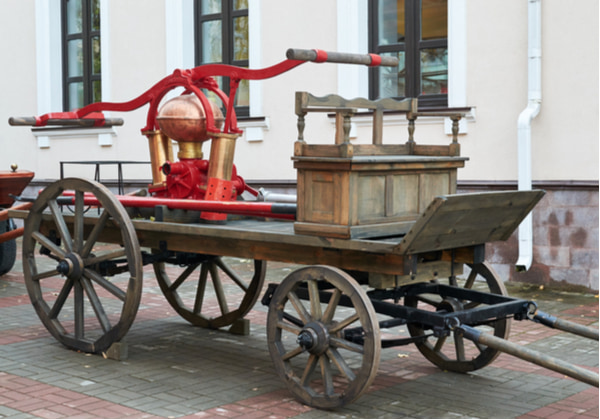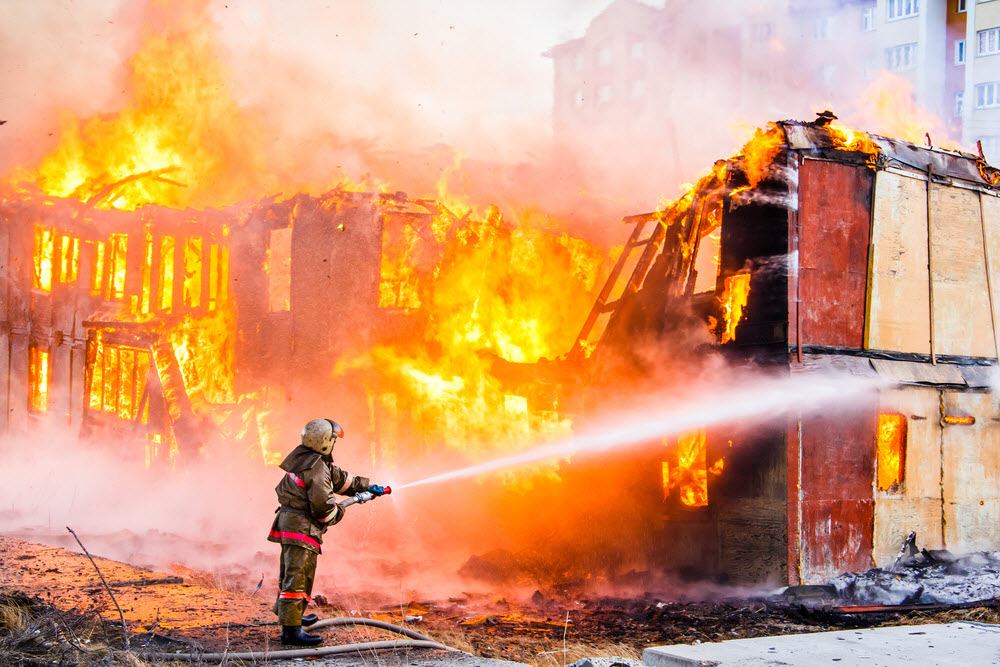Education
We deliver fire protection solutions and expertise across the education sector, including schools, universities, boarding houses, sports facilities and heritage buildings.
Learn More
Effective fire prevention requires expertise with complex fire protection equipment and systems – plus a thorough knowledge of building codes and compliance requirements across various property types and jurisdictions.
DEM Fire is a leader in fire solution design, system installation, asset management and fire compliance, thanks to our dedicated team and decades of experience. Fire protection equipment today is cutting edge… but it wasn’t always that way.
We take a look at moments in the history of firefighting that show just how far we’ve come, and how fortunate we are today to have integrated and advanced fire protection systems.

An ancient Roman inventor, Ctesibius of Alexandria, is sometimes credited with the development of the hand-operated fire extinguisher about 200 BCE. His invention was a primitive fire pump, used to direct water towards a fire from a close distance. Similar pumps only emerged again in 16th century Europe.
English chemists Ambrose Godfrey and French C. Hoppfer both developed devices in the 1700s that used explosive charges to disperse fire-suppressing solutions.
Godfrey’s invention was stationary, the small explosions releasing containers of liquid should fire enter the room it was located in. In that regard, we might perceive it as a distant ancestor of our modern sprinkler systems.
In the early 1800s, English inventor Captain George Manby introduced a three-gallon copper tank containing a pressurised solution of potassium carbonate and compressed air. It was the forerunner of the modern fire extinguisher, which uses pressurised gas to release one of several types of fire suppressant, each designed for specific accelerants.

Jan van der Heyden was a Dutch artist and leading painter of cityscapes in the later 1600s. Best known for his views of Amsterdam, he dabbled with mechanical inventions and with his son, created a primitive fire hose comprised of 50-foot lengths of leather stitched together. In 1690 he published his Brandspuiten-boek (‘Fire Engine Book’), a study of fire-fighting equipment that he also illustrated.
The fire hose was a game-changing invention, replacing ‘bucket brigades’, where lines of people passed buckets along to be thrown onto a fire.
Subsequent steps towards the development of modern fire hoses included the first use of metal rivets to join leather lengths (American firemen James Sellars and Abraham Pennock in 1807), the development of a rubber lined, cotton-webbed fire hose (by James Boyd in 1821) and the standardisation of couplings in 1873 (by the International Association of Fire Engineers) to ensure different sized hoses could be easily joined during a fire.
Over the 20th century, leather hoses were gradually replaced by cotton and large diameter versions that were lightweight, durable and flexible.

In 1721, a British inventor, Richard Newsham, patented a twin-cylinder single-acting fire pump on a wheeled cart. It required a bucket brigade to fill the cistern and a few people to operate the pump, which shot water around 135 feet.
The first horse-drawn steam engine was invented in 1829 but took several decades to gain acceptance. Horse gave way to the motor. Then steam engines were replaced by internal combustion engine fire trucks, designed in the United States in the early 20th century.
Fire brigades now equip engines with water tanks, cranes and ladders plus sophisticated equipment including breathing apparatus, thermal cameras and drones.

It’s thought the origins of organised firefighting lie in ancient Rome, when Emperor Caesar Augustus established a group of trained firefighters called The Corp of Vigiles. Over the centuries, organisational firefighting often emerged after devastating fires, including the Great Fire of London in 1666 and an 1810 fire at the Austrian Embassy in Paris.
The latter led Napoleon Bonaparte to establish a group of army firefighters known as Sapeurs-Pompiers.
Closer to home in NSW, the Australian Insurance Company started a Fire Brigade in Sydney in 1836 (replacing a sole military brigade); The Fire Brigades Act came into effect in 1884 leading to the development of the Metropolitan Fire Brigade (MFB); and the City of Sydney Fire Station opened in Castlereagh Street in 1888.
In 1855, Goulburn established the first fire brigade outside Sydney, followed closely by Newcastle and Maitland. In 1910 The Fire Brigades Act was enlarged to cover the state and MFB was replaced by a new Board of Fire Commissioners and an organisation called the New South Wales Fire Brigade (NSWFB). In 2011, its name changed to today’s Fire and Rescue NSW (FRNSW).

Comprehensive fire protection involves a number of elements, including a solution design tailored to company size and sector, plus the installation and management of assets including fire alarms, extinguishers, sprinkler systems, hoses, hydrants, fire doors and blankets.
Properties also require an intricate network of alarm and suppression systems to interact seamlessly.
Tom Marshall, DEM Fire Managing Director, explains that this has only occurred in recent decades.
“There was a major bowling club fire in the early 1990s,” he says, “and it emerged that different parties were maintaining systems independently. No one was taking a holistic look at buildings and how systems interface together.”
DEM Fire prides itself on its holistic approach to fire prevention, decades of experience and dedicated team of first class fire prevention professionals. Contact us to discuss your requirements for premier fire protection. Read more Fire Prevention Industry articles.
We deliver fire protection solutions and expertise across the education sector, including schools, universities, boarding houses, sports facilities and heritage buildings.
Learn MoreWe are experts in fire protection for commercial & retail properties. With decades of experience, we have calibrated and fine-tuned our fire protection process.
Learn MoreInstalling fire protection systems and solutions in a logistics and storage environment is complex and can be risky. We use cutting-edge technology in our fire system design.
Learn MoreIndustrial manufacturing requires a unique understanding of fire hazards in this environment. Best practice in fire system design is an absolute minimum.
Learn MoreEach hospitality & tourism location is unique, so focused fire safety expertise provided by an accredited team of experienced fire system engineers is vital to ensure safety for all.
Learn MoreFire safety & property compliance must be a focus for strata owners & managers. Commercial property owners have a legal requirement to ensure the safety of all inhabitants.
Learn MoreLarge-scale and high-traffic fire protection solutions are critical for public venues - from clubhouses at sports complexes to large stadiums. They require meticulous fire safety strategies.
Learn MoreNeed more information? Get in touch
© Copyright DEM Fire & Essential Services Group 2025. All rights reserved. Website by Brilliant Digital.